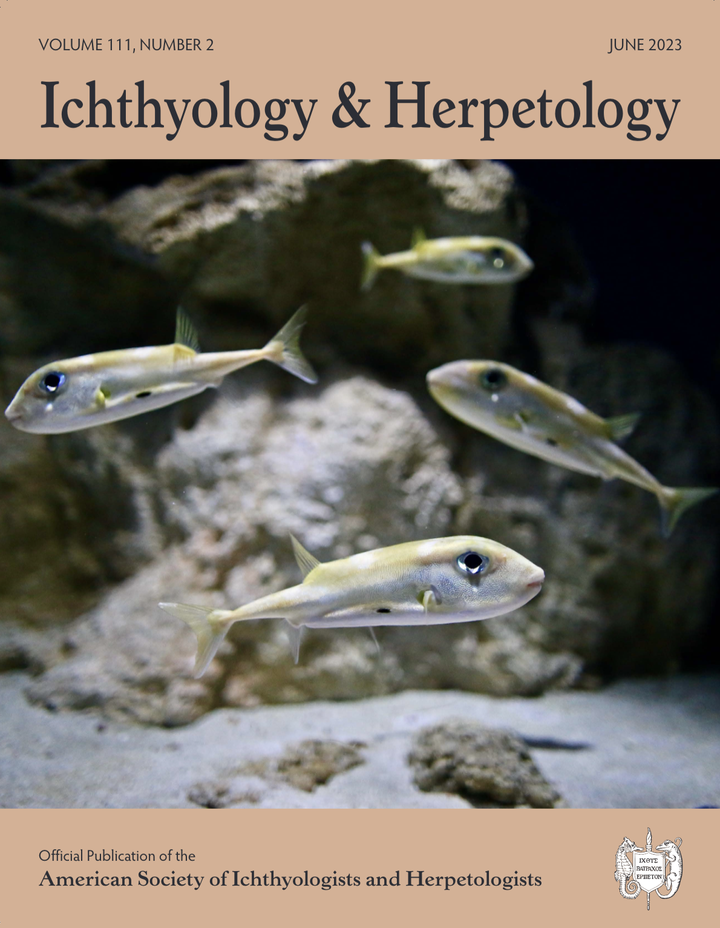Pelvic-fan flaring and Inflation in the Three-Tooth Puffer, *Triodon macropterus* (Tetraodontiformes: Triodontidae)
 Cover image for Journal issue
Cover image for Journal issue
Abstract
Triodon macropterus, the Three-Tooth Puffer, is the sole extant representative of Triodontidae. It is characterized by a large pelvic fan that is flared when disturbed. Unlike Tetraodontidae (pufferfishes) and Diodontidae (porcupinefishes), T. macropterus has not previously been shown to inflate its abdomen although some nineteenth-century reports implied that it can. Those reports were rejected by a mid-twentieth-century anatomical study, and no new information about inflation in T. macropterus has been reported in the intervening 70 years, in part because the fish was rarely collected. Now, two things have changed. First, digital cameras enable fishermen to document and share photographs of unusual fishes via the Internet. We found 13 such photographs of T. macropterus in which the pelvic fan was prominently flared; in seven of these, the abdomen was also inflated. Second, T. macropterus are kept in the Okinawa Churaumi Aquarium, which allowed us to make videographic and ultrasound studies of live individuals to confirm inflation behavior in this species. Videography shows that pelvic-fan flaring always preceded inflation. Ultrasound data from four trials of one captive individual show that water is buccal pumped for inflation into the stomach to produce an increase in volume of 30%. Powerful adduction of the suspensorium correlates with stomach inflation. We prepared x-rays and dissected three specimens to evaluate mobility of the long pelvic bone and its role in expanding the ventral abdominal recess during pelvic-fan flaring. We also studied the digestive tract and discovered a thin-walled pyloric region of the stomach that allows inflation to occur. Differences between the inflation mechanism of T. macropterus and those of tetraodontids and diodontids include: 1) inflation is slower and less extreme in T. macropterus; 2) T. macropterus has a pelvic bone that expands the ventral abdominal recess; 3) T. macropterus has smaller folds in the peritoneum and these are ventral to, rather than dorsal to, the digestive tract; 4) the ribs and long postcleithra of T. macropterus limit abdominal inflation; 5) the first branchiostegal ray of T. macropterus is much smaller than in tetraodontids and diodontids, which use the expanded bone to rapidly pump water for inflation; and 6) the pectoral girdle of T. macropterus is larger and much less mobile than that of tetraodontids and diodontids. Although we interpret that inflation serves similar roles in defense, the differences in the inflation mechanism of T. macropterus suggest that it evolved independently, and optimization of inflation behavior on three phylogenetic hypotheses for Tetraodontiformes supports this interpretation.
Almetric and Dimension badges